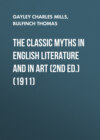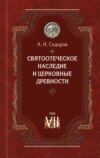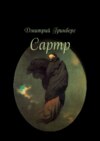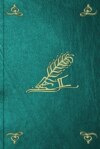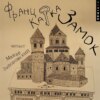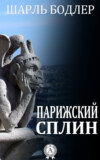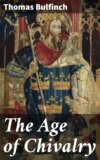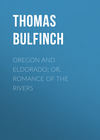Читать книгу: «The Classic Myths in English Literature and in Art (2nd ed.) (1911)», страница 36
Illustrative. Spenser, Epithalamion; Faerie Queene, 1, 11, 51.
128. Textual. Mysia: province of Asia Minor, south of the Propontis, or Sea of Marmora. There is some doubt about the identification of the existing statue with that described by the ancients, and the mysterious sounds are still more doubtful. Yet there is not wanting modern testimony to their being still audible. It has been suggested that sounds produced by confined air making its escape from crevices or caverns in the rocks may have given some ground for the story. Sir Gardner Wilkinson, a traveler of the highest authority, examined the statue itself, and discovered that it was hollow, and that "in the lap of the statue is a stone, which, on being struck, emits a metallic sound that might still be made use of to deceive a visitor who was predisposed to believe its powers."
Table H. The Ancient Race of Luminaries and Winds

Interpretative. Memnon is generally represented as of dark features, lighted with the animation of glorious youth. He is king of the mythical Æthiopians who lived in the land of gloaming, where east and west met, and whose name signifies "dark splendor." His birth in this borderland of light and darkness signifies either his existence as king of an eastern land or his identity with the young sun, and strengthens the theory according to which his father Tithonus is the gray glimmer of the morning heavens. The flocks of birds have been explained as the glowing clouds that meet in battle over the body of the dead sun.
Illustrative. Milton, Il Penseroso; Drummond, Summons to Love, "Rouse Memnon's mother from her Tithon's bed"; Akenside, Pleasures of the Imagination (analogy between Memnonian music and spiritual appreciation of truth); Landor, Miscellaneous Poems, 59, "Exposed and lonely genius stands, Like Memnon in the Egyptian sands," etc.
In Art. Fig. 101, from a vase in the Louvre.
129-130. Textual. Doric pillar: the three styles of pillars in Greek architecture were Dorian, Ionic, Corinthian (see English Dictionary). Trinacria: Sicily, from its three promontories. Ægon and Daphnis: idyllic names of Sicilian shepherds (see Idyls of Theocritus and Virgil's Eclogues). Naïs: a water-nymph. For Cyclops, Galatea, Silenus, Fauns, Arethusa, see Index. Compare, with the conception of Stedman's poem, Wordsworth's Power of Music.
Illustrative. Ben Jonson, Pan's anniversary; Milton, Paradise Lost, 4. 266, 707; Paradise Regained, 2, 190; Comus, 176, 268; Pope, Autumn, 81; Windsor Forest, 37, 183; Summer, 50; Dunciad, 3, 110; Akenside, Pleasures of Imagination, "Fair Tempe! haunt beloved of sylvan Powers," etc.; On Leaving Holland, 1, 2. Poems: Fletcher, Song of the Priest of Pan, and Song of Pan (in The Faithful Shepherdess); Landor, Pan and Pitys, "Pan led me to a wood the other day," etc.; Landor, Cupid and Pan; R. Buchanan, Pan; Browning, Pan and Luna; Swinburne, Pan and Thalassius; Hon. Roden Noël, Pan, in the Modern Faust. Of course Mrs. Browning's Dead Pan cannot be appreciated unless read as a whole; nor Schiller's Gods of Greece.
131. Fauns. Milton, Paradise Lost, 4, 708; 10. 573, 597; 11. 472, 788; Paradise Regained, 2, 257; Mrs. Browning, Flush or Faunus (sonnet). Dryads: Pope, Moral Essays, 4, 94; Winter, 12; Collins, The Passions; Keats, Nightingale, Psyche. Satyrs: Milton, Lycidas; Dryden, Mrs. Anne Killigrew, 6; Hawthorne, Marble Faun.
In Art. Fauns (sculpture): The Barberini Faun (Munich); the Drunken Faun, Sleeping Faun, Faun and Bacchus, and Dancing Faun (National Museum, Naples); the Dancing Faun (Lateran, Rome); the so-called Faun of Praxiteles or Marble Faun (Fig. 106 in text – a Satyr – best copy in the Capitoline, Rome). Pan and Apollo: Græco-Roman sculpture (Museum, Naples). Pan: Fig. 102, in text; and Fig. 103, from an original perhaps of the School of Scopas or Praxiteles (Florence). Silenus and Bacchus (Glyptothek, Munich). Nymphs (pictures): Bouguereau, Nymphs and Satyr, and Nymphs; Burne-Jones, Nymphs; Giorgione, Nymphs pursued by a Satyr. Satyrs: Michelangelo (picture) (Uffizi, Florence), Mask of a Satyr; Rubens, Satyrs (Munich); Satyrs (sculpture), relief from theater of Dionysus; Satyr playing a flute (Vatican); and Figs. 103, 104, and 106-108 in the text.
132-133. Textual. Cephissus: four rivers in Phocis, Attica, and Argolis bear this name. The most famous runs near Athens.
Illustrative. Echo: Chaucer, Romaunt of the Rose, 1468 et seq.; Spenser, Prothalamion; Milton, Comus, 237; Collins, The Passions. Poems: L. Morris (Epic of Hades), Narcissus; Goldsmith, On a Beautiful Youth, etc.; Cowper, On an Ugly Fellow; Milton, Paradise Lost, 4, 449-470 (illus.); and Comus. In Art: Narcissus (sculpture), and Fig. 109, in text (Museum, Naples).
137. Dryope (poem), by W. S. Landor.
138. Rhœcus. Poems by Landor, The Hamadryad; Acon and Rhodope.
139. Pomona. Phillips, a poem on Cider. See Index. In Art: the painting by J. E. Millais.
Interpretative. The various guises and transformations of Vertumnus signify the succession of the seasons and the changing characteristics of each. The name itself implies turning, or change.
140. Textual. In order to understand the story of Ibycus, it is necessary to remember, first, that the theaters of the ancients were immense fabrics, capable of containing from ten to thirty thousand spectators, and as they were used only on festal occasions and admission was free to all, they were usually filled. They were without roofs and open to the sky, and performances were in the daytime. Secondly, that the appalling representation of the Furies is not exaggerated in the story. It is fabled that Æschylus, the tragic poet, having on one occasion represented the Furies in a chorus of fifty performers, the terror of the spectators was such that many fainted and were thrown into convulsions, and the magistrates forbade a like representation for the future (Pollux, 4, 110). Usually the chorus in a single tragedy consisted of only fifteen performers.
Illustrative. On the Furies see C. 49. On Ibycus see translation of Schiller's Cranes of Ibycus, by E. A. Bowring.
141. Textual. The adventures of the water-divinities turn largely on the idea of metamorphosis, which would readily be suggested to the imaginative mind by contemplation of the ever-changing aspect of fountain, stream, lake, or ocean. For genealogies of water-deities, see Table C.
Interpretative. The Cyclops, Polyphemus, does not possess much in common with Steropes, Brontes, and Arges, the offspring of Uranus and Gæa, save his one eye and his monstrous size. The sons of Gæa are personifications of thunder and lightning; Polyphemus is the heavy vapor that rolls its clouds along the hillside. The clouds are the sheep that he pastures; the sun glowering through the vapor is his single eye (Cox). More probably he is a mere giant of folklore.
Illustrative. John Gay, Song of Polypheme (in Acis and Galatea); A. Dobson, A Tale of Polypheme; R. Buchanan, Polypheme's Passion; Shelley, The Cyclops of Euripides; Translations of Theocritus by Mrs. Browning and by Calverley; J. S. Blackie, Galatea; B. W. Procter, The Death of Acis. See also on the Cyclops, Shakespeare, Titus Andronicus, IV, iii; Hamlet, II, ii.
In Art. Fig. 112, text; Carracci's frescoes in the Farnese Palace, Rome, of Polyphemus, Acis and Galatea; Claude Lorrain's painting, Evening, Acis and Galatea; Raphael's Triumph of Galatea.
142. Textual. For descent of Glaucus, see Tables G and I. For Scylla's descent, see Table C. See Keats, Endymion, Bk. 3.
Interpretative. Glaucus is explained by some as the calm gleaming sea; by others, as the angry sea that reflects the lowering heavens (see Roscher, p. 1690). Scylla is a personification of treacherous currents and shallows among jagged cliffs and hidden rocks.
144. For genealogy of Ino, see Table E. "Leucothea waked, and with fresh dews embalmed The Earth" (Milton, Paradise Lost, 11, 135).
145. Cyrene was sister to Daphne. Honey must first have been known as a wild product, the bees building their structures in hollow trees, or holes in the rocks, or any similar cavity that chance offered. Thus occasionally the carcass of a dead animal would be occupied by the bees for that purpose. It was no doubt from some such incident that the superstition arose that bees were engendered by the decaying flesh of the animal. Virgil assigns to Proteus the isle of Carpathus, between Crete and Rhodes; Homer, the isle of Pharus, near the river Nile.
Illustrative. See C. 50. Proteus, a poem by R. Buchanan. On Aristæus, Cowper's Task, comparison of the ice-palace of Empress Anne of Russia with Cyrene's palace. Milton probably thought of Cyrene in describing Sabrina (Comus). He calls Proteus "the Carpathian Wizard."
146-147. Textual. Acheloüs: the largest river in Greece, rose in Mount Lacmon, flowed between Acarnania and Ætolia, and emptied into the Ionian Sea. It was honored over all Greece. Calydon: a city of Ætolia, famed for the Calydonian Hunt. Parthenope, see 238. Ligea (Ligeia): the shrill-sounding maiden; here a Siren; sometimes a Dryad.
Interpretative. Even among the ancients such stories as this were explained on a physical basis: the river Acheloüs flows through the realm of Dejanira, hence Acheloüs loves Dejanira. When the river winds it is a snake, when it roars it is a bull, when it overflows its banks it puts forth new horns. Hercules is supposed to have regulated the course of the stream by confining it within a new and suitable channel. At the same time the old channel, redeemed from the stream, subjected to cultivation, and blossoming with flowers, might well be called a horn of plenty. There is another account of the origin of the Cornucopia. Jupiter at his birth was committed by his mother Rhea to the care of the daughters of Melisseus, a Cretan king. They fed the infant deity with the milk of the goat Amalthea. Jupiter, breaking off one of the horns of the goat, gave it to his nurses, and endowed it with the power of becoming filled with whatever the possessor might wish.
148. (5)
Table I. The Race of Iapetus, Deucalion, Atlas, and Hellen





Illustrative. The name Amalthea is given also to the mother of Bacchus. It is thus used by Milton, Paradise Lost, 4, 275:
That Nyseian isle,
Girt with the river Triton, where old Cham,
Whom Gentiles Ammon call and Libyan Jove,
Hid Amalthea, and her florid son,
Young Bacchus, from his stepdame Rhea's eye.
See also Milton, Paradise Regained, 2, 356.
148. For the general genealogy of the race of Inachus, see Table D. For the general race of Iapetus, Deucalion, Hellen, Æolus, Ætolus, etc., see below, Table I (based in part on the table given in Roscher, article Deukalion). For the descendants of Agenor, see Table E. For the houses of Minos and of Labdacus, see Tables L and N. For the descendants of Belus (house of Danaüs), see Tables I and J; of Cecrops and Erechtheus, Table M.

149-154. Textual. Seriphus: an island of the Ægean.
The House of Danaüs is as follows:
Table J. The House of Danaüs

Interpretative. While Danaüs is, in fact, a native mythical hero of Argos, the story of his arrival from Egypt is probably an attempt to explain the influence of Egyptian civilization upon the Greeks. The name Danaüs means drought, and may refer to the frequently dry condition of the soil of Argos. The fifty daughters of Danaüs would then be the nymphs of the many springs which in season refresh the land of Argolis. Their suitors, the fifty sons of Ægyptus, would be the streams of Argolis that in the rainy months threaten to overflow their banks. But the springs by vanishing during the hot weather deprive the streams of water and consequently of life. That is to say, when the sources (Danaïds) choose to stop supplies, the heads of the streams (the fifty youths of Argolis) are cut off. The reference to Ægyptus and the sons of Ægyptus would indicate a reminiscence of the Nile and its tributaries, alternately overflowing and exhausted. The unsuccessful toil of the Danaïds in Tartarus may have been suggested by the sandy nature of the Argive soil, and the leaky nature of the springs, now high, now low. Or it may typify, simply, any incessant, fruitless labor. The name Hypermnestra signifies constancy and love. Danaë, the daughter of Acrisius, has been regarded as the dry earth, which under the rains of the golden springtime bursts into verdure and bloom; or as the dark depths of the earth; or as the dawn, from which, shot through with the golden rays of heaven, the youthful Sun is born.428 Advocates of the last theory would understand the voyage of Danaë and Perseus as the tossing of the sunbeams on the waters of the eastern horizon. The young Sun would next overcome the Gray-women, forms of the gloaming, and then slay with his sword of light the black cloud of the heavenly vault, the Gorgon, whose aspect is night and death.
The Grææ and the Gorgons may, with greater probability, be taken as personifications of the hidden horrors of the unknown night-enveloped ocean and the misty horizon whence storms come. In that case the Grææ will be the gray clouds, and their one tooth (or one eye) the harmless gleam of the lightning; the Gorgons will be the heavy thunderclouds, and their petrifying gaze the swift and fatal lightning flash.
But there are still others who find in the Gorgon Medusa the wan visage of the moon, empress of the night, slain by the splendor of morning. The sandals of Hermes have, accordingly, been explained as the morning breeze, or even as the chariot of the sun. The invisible helmet may be the clouds under which the sun disappears. Compare the cloak of darkness in the Three Daughters of King O'Hara; and the Sword of Sharpness in the Weaver's Son and the Giant of White Hill (Curtin, Myths of Ireland).
Andromeda is variously deciphered: the tender dawn, which a storm-cloud would obscure and devour; the moon, which darkness, as a dragon, threatens to swallow; or some historic character that has passed into myth. Compare the contests of Perseus and the Dragon, Apollo and Pytho, Hercules and the Serpents, Cadmus and the Dragon of Mars, St. George and the Dragon, Siegfried and the Worm (Fafnir). For a Gaelic Andromeda and Perseus, see The Thirteenth Son of the King of Erin (Curtin, Myths of Ireland).
Perseus' flight to the Gardens of the Hesperides suggests, naturally, the circuit of the sun toward the flushing western horizon; and, of course, he would here behold the giant Atlas, who, stationed where heaven and earth meet, sustains upon his shoulders the celestial vault.
The Doom of Acrisius reminds one of that of Hyacinthus. The quoit suggests the rays of the sun, and the name Acrisius may be construed to mean the "confused or gloomy heavens" (Roscher, Preller, Müller, etc.).
Illustrative. "The starred Æthiope queen": Cassiopea (Cassiepea, or Cassiope) became a constellation. The sea-nymphs, however, had her placed in a part of the heavens near the pole, where she is half the time held with her head downward to teach her humility.
Danaë. Tennyson, Princess, "Now lies the Earth all Danaë to the stars, And all thy heart lies open unto me." Translations of Simonides' Lament of Danaë, by W. C. Bryant and by J. H. Frere. Danaïd: Chaucer, Legende of Good Women, 2561 (Hypermnestra and Lynceus).
Gorgons and Medusa. Spenser, Epithalamion, "And stand astonished like to those which read Medusa's mazeful head"; Milton, Paradise Lost, 2. 611, 628; Comus (on Ægis and Gorgon); Drummond, The Statue of Medusa; Gray, Hymn to Adversity; Armstrong, The Art of Preserving Health; D. G. Rossetti, Aspecta Medusa; L. Morris, in The Epic of Hades; Thomas Gordon Hake, The Infant Medusa (a sonnet); E. Lee-Hamilton, The New Medusa; Lady Charlotte Elliot, Medusa.
Andromeda. Milton, Paradise Lost, 3, 559 (the constellation); L. Morris in The Epic of Hades; W. Morris, Doom of King Acrisius; E. Dowden, Andromeda (The Heroines).
Atlas. Shakespeare, 3 Henry VI, 5, 1; Milton, Paradise Lost, 4, 987; 11, 402, comparison of Satan and Atlas.
In Art. Fig. 116, in text: vase in the Hermitage, St. Petersburg. Titian's painting, Danaë and the Shower of Gold; Correggio's Danaë. Ancient sculpture: a Danaïd in the Vatican; the Danaïds on an altar in the Vatican (Fig. 115, in text).
Perseus and Andromeda. Figs. 119-121, and opp. p. 212, in text; painting by Rubens (Berlin). Sculpture: Benvenuto Cellini's Perseus (Loggia de' Lanzi, Florence), and Perseus saving Andromeda; Canova's Perseus (Vatican).
Medusa. Græco-Roman sculpture: Head of Dying Medusa (Villa Ludovisi, Rome); the beautiful Medusa Rondanini in the Glyptothek, Munich (Figs. 117 and 118, text); numerous illustrations of abhorrent Gorgons in Roscher, p. 1707 et seq., from vases, seals, marbles, etc.
Modern Painting. Leonardo da Vinci, Head of Medusa.
155. Textual. The descent of Bellerophon is as follows. (See also Table I.)

Lycia: in Asia Minor. The fountain Hippocrene, on the Muses' mountain, Helicon, was opened by a kick from the hoof of Pegasus. This horse belongs to the Muses, and has from time immemorial been ridden by the poets. From the story of Bellerophon being unconsciously the bearer of his own death-warrant, the expression "Bellerophontic letters" arose, to describe any species of communication which a person is made the bearer of, containing matter prejudicial to himself. Aleian field: a district in Cilicia (Asia Minor).
Interpretative. Bellerophon is either "he who appears in the clouds," or "he who slays the cloudy monster." In either sense we have another sun-myth and sun-hero. He is the son of Glaucus, who, whether he be descended from Sisyphus or from Neptune, is undoubtedly a sea-god. His horse, sprung from Medusa, the thundercloud, when she falls under the sword of the sun, is Pegasus, the rain-cloud. In his contest with the Chimæra we have a repetition of the combat of Perseus and the sea monster. Bellerophon is a heavenly knight errant who slays the powers of storm and darkness. The earth, struck by his horse's hoof, bubbles into springs (Rapp in Roscher, and Max Müller). At the end of the day, falling from heaven, this knight of the sun walks in melancholy the pale fields of the twilight.
Illustrative. Wm. Morris, Bellerophon in Argos and in Lycia (Earthly Paradise); Longfellow, Pegasus in Pound; Bowring's translation of Schiller's Pegasus in Harness. Milton (Bellerophon and Pegasus), Paradise Lost, 7, 1; Spenser, "Then whoso will with virtuous wing assay To mount to heaven, on Pegasus must ride, And with sweet Poet's verse be glorified"; also Faerie Queene, 1, 9, 21; Shakespeare, Taming of the Shrew, IV, iv; 1 Henry IV, IV, i; Henry V, III, vii; Pope, Essay on Criticism, 150; Dunciad, 3, 162; Burns, To John Taylor; Young's Night Thoughts, Vol. 2 (on Bellerophontic letters). Hippocrene: Keats, To a Nightingale.
In Art. Bellerophon and Pegasus, vase picture (Monuments inédits, etc., Rome and Paris, 1839-1874); ancient relief, Fig. 122, in text.
156-162. For genealogy of Hercules, see Table J. Rhadamanthus: brother of Minos. (See Index.) Thespiæ and Orchomenos: towns of Bœotia. Nemea: in Argolis, near Mycenæ. Stymphalian lake: in Arcadia.
Pillars of Hercules. The chosen device of Charles V of Germany represented the Pillars of Hercules entwined by a scroll that bore his motto, "Plus Ultra" (still farther). This device, imprinted upon the German dollar, has been adopted as the sign of the American dollar ($). Dollar, by the way, means coin of the valley, – German Thal. The silver of the first dollars came from Joachimsthal in Bohemia, about 1518. Hesperides: the western sky at sunset. The apples may have been suggested by stories of the oranges of Spain. The Cacus myth is thoroughly latinized, but of Greek origin. The Aventine: one of the hills of Rome. Colchis: in Asia, east of the Euxine and south of Caucasus. Mysia: province of Asia Minor, north of Lydia. The river Phasis flows through Colchis into the Euxine. For genealogy of Laomedon, see Table O (5). Pylos: it is doubtful what city is intended. There were two such towns in Elis, and one in Messenia. The word means gate (see Iliad, 5, 397), and in the case of Hercules there may be some reference to his journey to the gate or Pylos of Hades. For Alcestis, see 83; for Prometheus, 15; for the family of Dejanira, Table K. Alcides: i. e. Hercules, descendant of Alcæus. Œchalia: in Thessaly or in Eubœa. Mount Œta: in Thessaly. The Pygmies: a nation of dwarfs, so called from a Greek word meaning the cubit, or measure of about thirteen inches, which was said to be the height of these people. They lived near the sources of the Nile, or, according to others, in India. Homer tells us that the cranes used to migrate every winter to the Pygmies' country, where, attacking the cornfields, they precipitated war. H. M. Stanley, in his last African expedition, discovered a race of diminutive men that correspond fairly in appearance with those mentioned by Homer. The Cercopes: the subject of a comic poem by Homer, and of numerous grotesque representations in Greek literature and sculpture.
Interpretative. All myths of the sun represent that luminary as struggling against and overcoming monsters, or performing other laborious tasks in obedience to the orders of some tyrant of inferior spirit, but of legal authority. Since the life of Hercules is composed of such tasks, it is easy to class him with other sun-heroes. But to construe his whole history and all his feats as symbolic of the sun's progress through the heavens, beginning with the labors performed in his eastern home and ending with the capture of Cerberus in the underworld beyond the west, or to construe the subjects of the twelve labors as consciously recalling the twelve signs of the Zodiac is not only unwarranted, but absurd. To some extent Hercules is a sun-hero; to some extent his adventures are fabulous history; to a greater extent both he and his adventures are the product of generations of æsthetic, but primitive and fanciful, invention. The same statement holds true of nearly all the heroes and heroic deeds of mythology. As a matter of interest, it may be noted that the serpents that attacked Hercules in his cradle are explained as powers of darkness which the sun destroys, and the cattle that he tended, as the clouds of morning. His choice between pleasure and duty at the outset of his career enforces, of course, a lesson of conduct. His lion's skin may denote the tawny cloud which the sun trails behind him as he fights his way through the vapors that he overcomes (Cox). The slaughter of the Centaurs may be the dissipation of these vapors. His insanity may denote the raging heat of the sun at noonday. The Nemean lion may be a monster of cloud or darkness; the Hydra, a cloud that confines the kindly rains, or at times covers the heavens with numerous necks and heads of vapor. The Cerynean Stag may be a golden-tinted cloud that the sun chases; and the Cattle of the Augean stables, clouds that, refusing to burst in rain, consign the earth to drought and filth. The Erymanthian boar and the Cretan bull are probably varied forms of the powers of darkness; so also the Stamphalian (Stymphalian) birds and the giant Cacus. Finally, the scene of the hero's death is a "picture of a sunset in wild confusion, the multitude of clouds hurrying hither and thither, now hiding, now revealing the mangled body of the sun." In this way Cox, and other interpreters of myth, would explain the series. But while the explanations are entertaining and poetic, their very plausibility should suggest caution in accepting them. It is not safe to construe all the details of a mythical career in terms of any one theory. The more noble side of the character of Hercules presents itself to the moral understanding, as worthy of consideration and admiration. The dramatist Euripides has portrayed him as a great-hearted hero, high-spirited and jovial, rejoicing in the vigor of manhood, comforting the downcast, wrestling with Death and overcoming him, restoring happiness where sorrow had obtained. No grander conception of manliness has in modern times found expression in poetry than that of the Hercules in Browning's transcript of Euripides, Balaustion's Adventure.
Illustrative. Lang's translation of the Lityerses song (Theocritus, Idyl X). The song, like the Linus song, is of early origin among the laborers in the field. For Hercules, see Sir Philip Sidney, Astrophel and Stella; Spenser, Faerie Queene, 1, 11, 27; Shakespeare, Merchant of Venice, II, i; III, ii; Taming of the Shrew, I, ii; Coriolanus, IV, i; Hamlet, I, ii; Much Ado About Nothing, II, i; III, iii; King John, II, i; Titus Andronicus, IV, ii; Antony and Cleopatra, IV, x; 1 Henry VI, IV, vii; Pope, Satires, 5, 17; Milton, Paradise Lost, 11, 410 (Geryon). Amazons: Shakespeare, King John, V, ii; Midsummer Night's Dream, II, ii; 1 Henry VI, I, iv; 3 Henry VI, I, iv; Pope, Rape of the Lock, 3, 67; Hylas: Pope, Autumn; Dunciad, 2, 336.
Poems. S. Rogers, on the Torso of Hercules; Browning, Balaustion's Adventure, and Aristophanes' Apology; L. Morris, Dejaneira (Epic of Hades); William Morris, The Golden Apples (Earthly Paradise); J. H. Frere's translation of Euripides' Hercules Furens, and Plumptre's, or R. Whitelaw's (1883), of Sophocles' Women of Trachis; George Cabot Lodge, Herakles. Pygmies: James Beattie, Battle of the Pygmies and the Cranes. Dejanira: Fragment of Chorus of a "Dejaneira," by M. Arnold. Hylas: Moore (song), "When Hylas was sent with his urn to the fount," etc.; Bayard Taylor, Hylas; R. C. Rogers, Hylas; translation of Theocritus, Idyl XIII, by C. S. Calverley, 1869. Daphnis: Theocritus, Idyl I. According to this, Daphnis so loves Naïs that he defies Aphrodite to make him love again. She does so, but he fights against the new passion, and dies a victim of the implacable goddess. This song is sung by Thyrsis. Also on Daphnis, read E. Gosse's poem, The Gifts of the Muses.
In Art. Fig. 65, of a statue reproducing the style of Scopas; figs. 123-129, and opp. p. 226, in text; Heracles in the eastern pediment of the Parthenon (?); the Torso Belvedere; Farnese Hercules (National Museum, Naples); Hercules in the metopes of the Temple of Silenus (Museum, Palermo); the Infant Hercules strangling a Serpent (antique sculpture), in the Uffizi at Florence; C. G. Gleyre's painting, Hercules at the Feet of Omphale (Louvre); Bandinelli (sculpture), Hercules and Cacus; Giovanni di Bologna (sculpture), Hercules and Centaur; Amazon (ancient sculpture), in the Vatican; and Figs. 162, 185 and opp. p. 306, in text; Centaur (sculpture), Capitol, Rome; the Mad Heracles, vase picture (Monuments inédits, Rome and Paris, 1839-1878).
163-167. For the descent of Jason from Deucalion, see Table G. Iolcos: a town in Thessaly. Lemnos: in the Ægean, near Tenedos. Phineus: a son of Agenor, or of Poseidon. For the family of Medea, see Table H.
Interpretative. Argo means swift, or white, or commemorates the ship-builder, or the city of Argos. The Argo-myth rests upon a mixture of traditions of the earliest seafaring and of the course of certain physical phenomena. So far as the tradition of primitive seafaring is concerned, it may refer to some half-piratical expedition, the rich spoils of which might readily be known as the Golden Fleece. So far as the physical tradition is concerned, it may refer to the course of the year (the Ram of the Golden Fleece being the fructifying clouds that come and go across the Ægean) or to the process of sunrise and sunset (?): Helle being the glimmering twilight that sinks into the sea; Phrixus (in Greek Phrixos), the radiant sunlight; the voyage of the Argo through the Symplegades, the nocturnal journey of the sun down the west; the oak with the Golden Fleece, a symbol of the sunset which the dragon of darkness guards; the fire-breathing bulls, the advent of morning; the offspring of the dragon's teeth, an image of the sunbeams leaping from eastern darkness. Medea is a typical wise-woman or witch; daughter of Hecate and granddaughter of Asteria, the starry heavens, she comes of a family skilled in magic. Her aunt Circe was even more powerful in necromancy than she. The robe of Medea is the fleece in another form. The death of Creüsa, also called Glauce, suggests that of Hercules (in the flaming sunset?). Jason is no more faithful to his sweetheart than other solar heroes – Hercules, Perseus, Apollo – are to theirs. The sun must leave the colors and glories, the twilights and the clouds of to-day, for those of to-morrow. See Roscher, pp. 530-537. The physical explanation is more than commonly plausible. But the numerous adventures of the Argonauts are certainly survivals of various local legends that have been consolidated and preserved in the artistic form of the myth. Jason, Diáson, is another Zeus, of the Ionian race, beloved by Medea, whose name, "the counseling woman," suggests a goddess. Perhaps Medea was a local Hera-Demeter, degraded to the rank of a heroine. The Symplegades may be a reminiscence of rolling and clashing icebergs; the dove incident occurs in numerous ancient stories from that of Noah down. If Medea be another personification of morning and evening twilight, then her dragons are rays of sunlight that precede her. More likely they are part of the usual equipage of a witch, symbolizing wisdom, foreknowledge, swiftness, violence, and Oriental mystery.
Illustrative. The Argo, see Theodore Martin's translation of Catullus, LXIV (Peleus and Thetis), for the memorable launch; Pope, St. Cecilia's Day. Jason: Shakespeare, Merchant of Venice, I, i; III, ii; Æson: Merchant of Venice, V, i; Absyrtus: 2 Henry VI, V, ii. Poems: Chaucer, Legende of Good Women, 1366 (Ysiphile and Medee); W. Morris, Life and Death of Jason; Frederick Tennyson, Æson and King Athamas (in Daphne and Other Poems). Thos. Campbell's translation of the chorus in Euripides' Medea, beginning "Oh, haggard queen! to Athens dost thou guide thy glowing chariot." Translations of the Medea of Euripides have been made by Augusta Webster, 1868; by W. C. Lawton (Three Dramas of Euripides) 1889; and by Wodhull.

